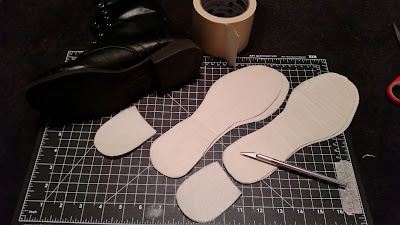My first sculpture is mainly composed of very dynamic triangular shapes, making the piece look very intimidating and interesting. To add contrast, I added a single, serene sphere among the jagged triangles. By having a different shape among a group of the same shape, it emphasizes that single shape.
Preliminary Sketch
Scale
My second sculpture look sort of like a mess, but I promise I put a lot of thought into it. This sculpture communicated a different idea of scale. I constructed two "frames" that intersect each other perpendicularly; they serve as traditional "boundaries" used in 2-D art. For example, a drawing or painting is limited by the boundaries of the paper. The broken wood pieces serve as a "gestural" lines that's seen in gesture drawing and sketching. However, the wood "lines" are not confined to the boundaries of the frames. They jut out the sides, towards the viewer, and away from the viewer. It's a 3-D drawing. I created four different planes so that the wood drawing can be seen at many different angles. So each side is a different "drawing".
Materials: Balsa Wood, Straight Pins, and Wood Glue
_________________________________________________________________
Pattern and Radial Symmetry
My final sculpture is a fusion of two separate principle of design, pattern and balance. I used circular shapes of glue to create a floral-looking piece and I nailed it to a wooden square. Then i made two sets of curved "leaf" shapes; 8 for each set. I placed them around the glue piece and folded them inwards towards the center and nailed it to the glue piece. The overlapping "leaves" create interesting circle pattern as well as create radial symmetry.
Materials: Balsa Wood, Wood glue, Straight Pins, Masking Tape, and Stonehenge Paper
Fall 2016
3-D Materials and Concepts
Materials: Balsa Wood, Wood glue, Straight Pins, Masking Tape, and Stonehenge Paper
Fall 2016
3-D Materials and Concepts





































